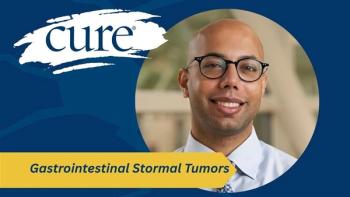
FDA Grants Breakthrough Device Status to MRD Test in Colorectal Cancer

Key Takeaways
- Haystack MRD test detects minimal residual disease in stage 2 colorectal cancer patients post-surgery, using circulating tumor DNA (ctDNA) for less invasive monitoring.
- The FDA's breakthrough device designation aims to expedite access to innovative medical devices for life-threatening conditions, enhancing patient care.
The FDA granted breakthrough device designation to Quest Diagnostics’ Haystack MRD test for patients with stage 2 colorectal cancer after surgery.
The U.S. Food and Drug Administration (FDA) has granted breakthrough device designation to Quest Diagnostics’ Haystack MRD test, which is used to identify minimal residual disease-positive patients with stage 2 colorectal cancer after curative-intent surgical treatment who may benefit from adjuvant, or postsurgical, therapy, the company announced.
A clinical laboratory-developed test version of Haystack MRD was introduced by Quest in late 2024, the company noted in the news release.
"We are committed to working with the FDA and our research partners to validate the use of Haystack MRD in a variety of solid tumors, building on this first designation for an early-stage colorectal cancer," said Dan Edelstein, vice president and general manager, Haystack Oncology, in the news release issued by Quest. "Our goal is to deliver highly accurate, personalized monitoring of treatment response and recurrence to more patients, both in clinical care and in pharmaceutical trials, and this Breakthrough Designation brings us closer to our goal.”
Minimal residual disease, as defined by the National Cancer Institute, is a term used to describe a very small number of cancer cells that remain in the body during or after treatment.
The Breakthrough Devices Program, according to the news release, applies to certain medical devices and device-led combination products that provide for more effective treatment or diagnosis of life-threatening or irreversibly debilitating diseases or conditions, and is intended to provide patients and providers with timely access to medical devices.
Haystack MRD, as detailed in the news release, is a blood test that is intended to detect low levels of circulating tumor DNA, or ctDNA, which are fragments of DNA from tumor cancer cells in the patient’s blood stream.
ctDNA Testing Shows Potential as a Reliable, Less Invasive Cancer Tool
Circulating tumor DNA could potentially offer great clinical utility to patients, one expert explained in
“Rather than going after a solid tumor and putting a needle in there, you can just get a tube of blood and get some of that genetic information (recognizing I'm saying some, because you can't necessarily get all) and the other advantage is you can do serial blood draws fairly easily compared to serial tissue biopsies,” Dr. Ben Ho Park, director of the Vanderbilt-Ingram Cancer Center in Nashville, explained in the interview.
“There's great potential utility here,” he continued. “And that is, can we use liquid biopsies or ctDNA to figure out who's cured or who's not? And that's been a big buzz lately, because as the years have gone by, technology has improved. Our understanding of what we could do with this has improved.”
Earlier this year, Quest announced findings of a report which stated that 94% of oncologists said that ctDNA MRD testing could reduce diagnosis delays in cancer recurrence, but they cited hurdles to wide adoption.
Furthermore, in a study published earlier this year in The New England Journal of Medicine, researchers found that ctDNA testing using Haystack MRD was a “reliable liquid biopsy," according to a news release from Memorial Sloan Kettering Cancer Center in New York.
According to Quest, Haystack MRD has been used in multiple clinical trials and research studies in the United States, Canada and Australia and by clinicians at more that 75 cancer and academic centers and health systems, and is now available for clinical use as part of Quest Diagnostics’ oncology testing portfolio. The test is also available for clinical trials as an investigational device.
For more news on cancer updates, research and education, don’t forget to
References
- “FDA Grants Breakthrough Device Designation for Haystack MRD Circulating Tumor DNA Test from Quest Diagnostics,” by Quest Diagnostics. News release; Aug. 25, 2025. https://newsroom.questdiagnostics.com/2025-08-25-FDA-Grants-Breakthrough-Device-Designation-for-Haystack-MRD-Circulating-Tumor-DNA-Test-from-Quest-Diagnostics
- “Minimal residual disease,” by National Cancer Institute. https://www.cancer.gov/publications/dictionaries/cancer-terms/def/minimal-residual-disease
- “What Patients with Cancer Need to Know About Circulating Tumor DNA,” by CURE, Sept. 4, 2024. https://www.curetoday.com/view/what-patients-with-cancer-need-to-know-about-circulating-tumor-dna
- “Oncologists Report Seeing More Advanced Cancers and Say Current Tests Are Not Catching Cancer Recurrence Early Enough, New Quest Diagnostics Report Finds,” by Quest Diagnostics. News release; May 13, 2025. https://newsroom.questdiagnostics.com/2025-05-13-Oncologists-Report-Seeing-More-Advanced-Cancers-and-Say-Current-Tests-Are-Not-Catching-Cancer-Recurrence-Early-Enough,-New-Quest-Diagnostics-Report-Finds
- “Immunotherapy Could Replace Surgery, Enabling Patients To Retain Their Organs and Enhance Their Quality of Life,” by Memorial Sloan Kettering Cancer Center. April 27, 2025; https://www.mskcc.org/news-releases/immunotherapy-could-replace-surgery-enabling-patients-to-retain-their-organs-and-enhance-their-quality-of-life





